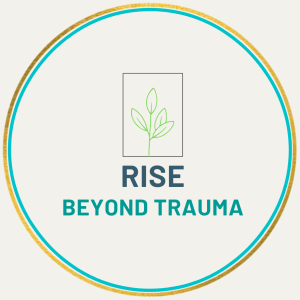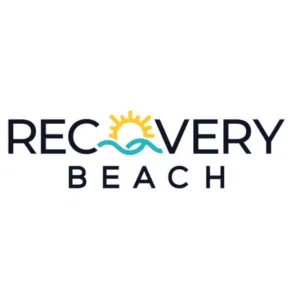Neurodiversity is an umbrella term. It refers to differences in the human brain with social skills, mood, attention, learning, and other functions.
Many people with neurodevelopment conditions identify as neurodivergent. These can include Autism Spectrum Disorders, Attention Deficit Disorder, development speech disorders, Tourette syndrome, and more. Mental health conditions like schizophrenia, bipolar disorders, antisocial personality disorder, dissociative disorders, and obsessive-compulsive disorder are also forms of neurodiversity.
What Do We Know About Neurodiversity?
Brain-imaging studies have been a valuable tool for understanding how people learn or process information compared to their neurotypical peers. They also can discover more information about how someone’s brain is wired and functions in a learning environment.
It is essential to recognize that people are diverse learners. By acknowledging this concept, we can reduce stigma and self-esteem issues. By better understanding neurodiversity, neurodivergent folks can build better self-esteem, confidence, resilience, and motivation.
What Is the Origin of This Term?
The term was coined in 1998 by sociologist Judy Singer, who identified as “likely somewhere on the autistic spectrum.” She used the word in her sociology honors thesis published in 1999. Also, she made the concept popular along with journalist Harvey Blume.
Neurodiversity shows that conditions like ADHD or autism aren’t “abnormal.” Instead, it views neurodivergent conditions as variations of the human brain.
How Can Neurodiversity Be Beneficial?
For kids and adults with differences in thinking and learning, they can better cope with their challenges. They can see their obstacles as differences instead of having a deficit. In fact, many experts believe that using an umbrella term like neurodivergent can be beneficial for people. Many experts want to consider renaming Attention Deficit and Hyperactivity Disorder. They think it can be used under the neurodivergent umbrella or that it’s more of an executive functioning disorder (we’ll get into this more later).
In schools, considering neurodiversity can also improve instructional approaches. These forms of education focus on the strengths that a young person has. Universal Design for Learning is one successful and proven approach.
UDL acknowledges that there is a wide range of learners with varying abilities. It implements diverse teaching strategies that reduce obstacles to learning. The primary objective of UDL is to give learners an equal opportunity to succeed.
What Do Disability Advocates Say About Neurodiversity?
Advocates are fighting against framing neurodevelopment disorders like autism, ADHD, dyslexia, and more as something that needs fixing. In essence, advocates do not believe that medical intervention is a means to “cure” or “fix” these individuals.
Instead, they believe support systems are more valuable. For instance, these can be inclusion-focused services, accommodations, communication technologies, occupational training, and independent living assistance.
In other words, the goal is for neurodivergent folks to receive support that embraces human diversity instead of treatment that makes them conform to normative standards of behavior.
What Kind of Practices Do Some Neurodivergent People Reject?
Many people in the autism and disability justice communities reject the practice of Applied Behaviour Analysis (ABA).
Over the past few decades, ABA was originally implemented to provide various techniques and approaches for kids with autism.
Principles of behavioral therapy are used, like positive reinforcement when desired behaviors are performed. It also aims to show autistic children how to develop skills that don’t come naturally and reduce self-injury.
However, as ABA has progressed and used more often, it has garnered many critics among autism advocates and parents. Many of these people critique ABA approaches and how certain practitioners use them.
One source of the criticism stems from the earliest form of ABA. In the 1960s, Dr. O. Ivaar Lovaas used a method called Discrete Trial Training (DTT). According to Susan Epstein, Ph.D., a clinical neuropsychologist, DTT was not based on positive reinforcement but used punishment to minimize self-injurious behaviors in residential settings. They used this method to treat severely impaired people through aversive reinforcement methods. These methods, which used electric shocks, are not deemed acceptable today.
Even though aversive reinforcement is considered unacceptable and rarely practiced, some critics believe ABA therapy is still hard on kids. It involves a lot of repetition, and some of the skills they learn aren’t even applicable to real-life situations.
Critics also believe that ABA is too focused on eliminating behaviors instead of working with them. They also don’t like the idea of eliminating differences and feel that ABA encourages this notion.
Managing Anxiety During COVID-19
Some Experts Even Want to Rename ADHD
Because “deficit” is in the name of Attention Deficit Hyperactivity Disorder, many experts believe it doesn’t describe the nature of the disorder. The term is mainly inaccurate and a potentially damaging name.
The name “deficit disorder” pathologizes ADHD as a disease or disorder. ADHD is not purely a disorder. It is actually a combination of assets and liabilities.
People that have ADHD do not have a disease or solely a deficit of attention. In actuality, folks with ADHD have plenty of attention. Their struggle is being able to control it.
Some experts believe that the term Variable Attention Stimulus Trait (VAST) is a more appropriate name. VAST “de-medicalizes” ADHD and points out the more positive aspects of having an ADHD brain.
VAST considers an enormous challenge for ADHDers – that is, rejection-sensitive dysphoria (RSD). RSD is an extreme emotional response pain triggered by the perceived or actual rejection/criticism from people.
VAST also acknowledges its alternate side, “recognition responsive euphoria.” This response is a super-charged response when encouragement is received.
People with ADHD/VAST can find that the symptoms can create challenges in their lives. As previously mentioned, rejection-sensitive dysphoria can cause negative emotions like guilt and shame. They can also experience hyperfocus, inattention, distractibility, disorganization, and difficulty regulating emotions.
Some Key Takeaways About Neurodiversity
- Neurodiversity reflects that brain differences are not deficits.
- The concept of neurodiversity can be beneficial for kids and adults who learn and think differently.
- Neurodiversity can reduce stigma around the way people learn and think.















